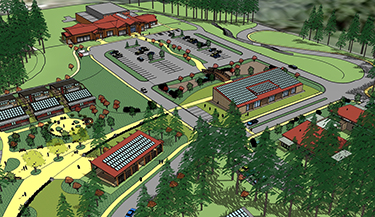|
Subscribe / Renew |
|
|
Contact Us |
|
| ► Subscribe to our Free Weekly Newsletter | |
| home | Welcome, sign in or click here to subscribe. | login |
Environment
| |
 |
September 28, 2017
Survey: Herrera Environmental Consultants
Specialty: Water resources, sustainable development, habitat restoration
Management: Mike Spillane, CEO; Carol Slaughterbeck, CFO; Phil Coughlan, COO
Founded: 1980
Headquarters: Seattle
2016 revenues: $14.2 million
Projected 2017 revenues: $14.9 million
Projects: Stormwater planning and design for cities in China as part of a national initiative to capture, treat and infiltrate or re-use stormwater; bringing SR 167 to the Port of Tacoma with stormwater management that is resilient to future climate change and benefits aquatic habitat; working on Stillaguamish Village near Arlington, a culturally and environmentally responsive new home for the Stillaguamish Tribe
The DJC asked Chris Webb, principal engineer with Herrera, about trends and issues in the industry. Here is what Webb said:
Q: How might a second Amazon headquarters affect the local design industry?
A: The choice to locate Headquarters 2 outside the Seattle area may slow the accelerated growth we’ve seen in the last several years. But I believe the region and our industry are still poised for good, healthy growth.
Q: What’s the next frontier for sustainability?
A: Integrating sustainability principles with resiliency principles to create communities that are more ecologically responsive and more able to handle changing weather patterns and natural disasters. To function well and be cost effective long term, public and private projects must be designed based on the latest understanding of sea level rise, increased storm intensities, decreased summer rainfall, decreased snow pack, natural and human caused disaster risk and how green systems function.
Herrera is on a team that is updating the predicted rainfall patterns and volumes used by engineers locally to design drainage infrastructure in light of climate change, and is doing community planning that considers sea-level rise.
Q: What is the biggest environmental issue in real estate?
A: Climate change and increasing stress on infrastructure, particularly related to water and energy. Infrastructure designed and based on historic rainfall and tide conditions may be overwhelmed by intense storms and high tides, resulting in more flood risk for certain properties and infrastructure. Changes in the climate may also stress some habitats, so some development regulations may need to be changed.
Q: How has technology changed what you do?
A: It is reinventing our industry and how we connect people to their communities and environment. We use remote sensing instruments and drones to collect real-time data on a project’s progress in ways not previously possible.
Developments in cloud computing allow us to design smart stormwater facilities with real-time controls to optimize system performance based on weather forecasts.
We use phone apps for residents to collect data in their neighborhoods so they can be part of the collaborative design and prioritization process on projects that affect them, such as new infrastructure or community amenities in the neighborhoods.
More advanced computer aided design and modeling lets us work in 3-D efficiently to better communicate designs to our clients and more clearly see how complex systems can be put together.
Q: Which services are most in demand and where do you see growth in the next five years?
A: Resilient infrastructure, integrating natural system principles in designs to create healthy, resilient communities and complete ecosystems. Resilient infrastructure and ecosystems have elasticity and redundancy to be able to meet performance goals in light of disruptions such as natural disasters and gradual change such as increased storm intensities in winter, increased droughts in summer and rising sea levels.
Additionally, there must be a shift in planning and changes in how we approach design, including probability and risk and financial analyses, that lets public entities plan for impacts associated with a changing climate. Firms which can integrate information from many design and scientific disciplines will produce more robust solutions for the complex problems we will face.
Other Stories:
- Working around an unworkable Voluntary Cleanup Program
- Survey: Golder Associates
- Survey: Farallon Consulting
- Survey: Aspect Consulting
- Fish barrier fix: Take a cue from Henry Ford
- Is Seattle’s Living Building Pilot Program ready to take off?
- Kalama methanol plant will fight climate change
- Water for rural development: tapping the Hirst ruling
- Going below the surface for better watershed health
- 30 years and beyond: caring for landfills post closure
- Survey: Environmental Science Associates



